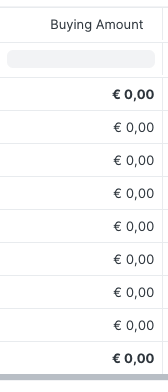Hi,
I think I understood how I “could” represent our (actually simple) process, but it would be very complicated imho … so I hope you have a better idea.
We’re offering consulting/dev services, which usually cannot be forecasted like a simple material, so we get (and sub-purchase) a “blanket order” or “blanket quotation”.
Lets say, we get 500 hours as budget for (each of) two different people in a period of 3 months.
So:
- Person A Role “Consultant”: 500 hours
- Person B Role “Developer”: 500 hours
Person A is an own employee and Person (or Supplier) B is sub-contracted for this time-period (with a Blanket Purchase).
So in the 1st month Person A has more vacation and only works 100 hours, where Person B worked 200 hours.
So B will send us an invoice about 200 hours for month 1. For Person A we won’t get any invoice, as he’s getting his common salary.
So we’ll create an invoice for
- Person A Role “Consultant”: 100 hours
- Person B Role “Developer”: 200 hours
And the Balance of the original Order is now:
- Person A Role “Consultant”: 400 hours
- Person B Role “Developer”: 300 hours
So the problem I am seeing is, that there needs to be many (Sales/Purchase)Orders between those documents, which makes it really unhandy.
Furthermore when creating the Order from the Blanket Order, the Prices are calculated wrong. And I dont have the connection to the timesheets, so it’s pretty hard to generate the order.
So I made a scribble over our process, how it is in reality, and hope there is a lean way to design it in ERPNext. What I understood is, that on each red line there is the necessarity to create (Sales/Purchase) Order (without really knowing which quantities will be called up. And actually it just doesn’t make sense to have so many different orders. Actually the “main Order” should just be possible to retrieve multiple invoices, and provide an overview about the open hours (quantities) and the final budget.
Perhaps there are other DocTypes available, which are a better fit for this demand?
Hope anybody can help me out.
Thanks
Philipp



